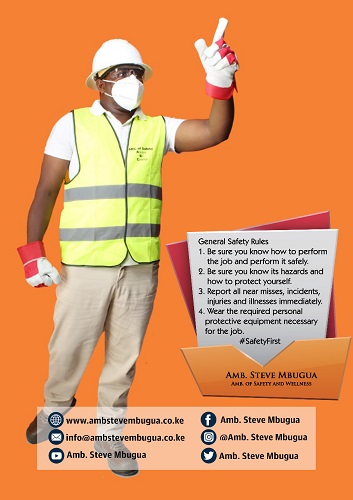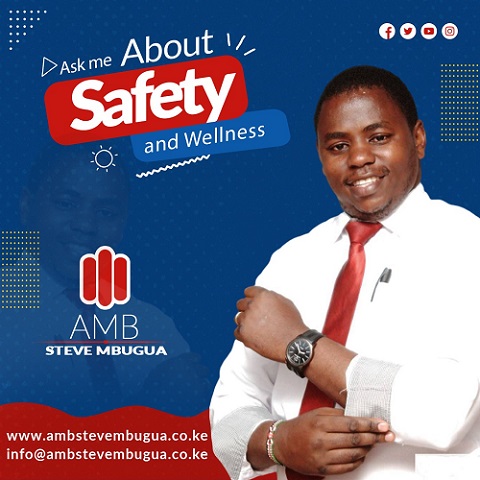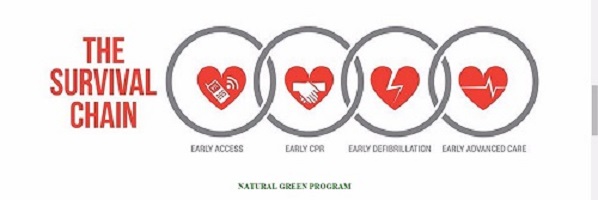Occupational Health and Safety (OHS) procedures are essential protocols designed to ensure the safety and well-being of employees in the workplace. These procedures help prevent accidents, reduce health risks, and ensure compliance with safety regulations. Here are ten different OHS procedures, detailed and expounded for clarity:
1. Risk Assessment and Management
1.1 Procedure Overview
• Objective: Identify, evaluate, and control workplace hazards to prevent accidents and health issues.
• Steps:
1. Hazard Identification: Conduct thorough inspections and consult employees to identify potential hazards, including physical, chemical, biological, and ergonomic risks.
2. Risk Evaluation: Assess the likelihood and severity of identified risks using risk assessment tools and techniques, such as risk matrices.
3. Control Measures: Develop and implement control measures to mitigate risks, including engineering controls, administrative controls, and personal protective equipment (PPE).
4. Monitoring and Review: Regularly review and update risk assessments and control measures to ensure their effectiveness and address any new hazards.
1.2 Detailed Explanation
• Hazard Identification: Utilize checklists, safety audits, and employee feedback to identify hazards. Consider potential risks in various work environments and tasks.
• Risk Evaluation: Assign risk ratings based on the probability of occurrence and potential impact. Prioritize risks that require immediate attention.
• Control Measures: Implement control strategies such as substituting hazardous materials with safer alternatives, redesigning work processes, or providing PPE.
• Monitoring and Review: Schedule periodic reviews of risk assessments to account for changes in the workplace, new processes, or emerging hazards.
2. Emergency Response Plan
2.1 Procedure Overview
• Objective: Prepare for and effectively respond to emergencies such as fires, chemical spills, and natural disasters.
• Steps:
1. Emergency Planning: Develop an emergency response plan outlining procedures for various emergency scenarios, including evacuation routes, emergency contacts, and roles and responsibilities.
2. Training and Drills: Conduct regular training sessions and drills to ensure employees are familiar with emergency procedures and can respond promptly.
3. Emergency Equipment: Ensure that emergency equipment, such as fire extinguishers, first aid kits, and alarm systems, is readily available and properly maintained.
4. Communication: Establish clear communication channels for reporting emergencies and coordinating response efforts with emergency services.
2.2 Detailed Explanation
• Emergency Planning: Create detailed procedures for different types of emergencies, including evacuation plans, assembly points, and communication strategies.
• Training and Drills: Regularly schedule drills and training sessions to familiarize employees with emergency procedures and ensure readiness.
• Emergency Equipment: Regularly inspect and maintain emergency equipment to ensure its functionality. Train employees on how to use the equipment effectively.
• Communication: Develop communication protocols for notifying employees and emergency services. Ensure that all employees know how to report emergencies and whom to contact.
3. Safe Work Procedures
3.1 Procedure Overview
• Objective: Establish standard operating procedures (SOPs) for performing tasks safely and efficiently.
• Steps:
1. Procedure Development: Create detailed SOPs for tasks, outlining safe work practices, equipment use, and potential hazards.
2. Employee Training: Train employees on SOPs to ensure they understand and follow safe work practices.
3. Implementation: Implement SOPs in daily operations and monitor adherence to ensure compliance.
4. Review and Update: Regularly review and update SOPs based on feedback, changes in procedures, or new safety information.
3.2 Detailed Explanation
• Procedure Development: Develop SOPs by analyzing tasks, identifying hazards, and specifying safe work practices. Include instructions on equipment handling, personal protective measures, and emergency procedures.
• Employee Training: Provide comprehensive training on SOPs, including practical demonstrations and assessments to ensure understanding and compliance.
• Implementation: Integrate SOPs into daily operations and conduct regular inspections to verify adherence.
• Review and Update: Continuously gather feedback and monitor changes to improve and update SOPs as needed.
4. Personal Protective Equipment (PPE) Usage
4.1 Procedure Overview
• Objective: Ensure the proper selection, use, and maintenance of PPE to protect employees from hazards.
• Steps:
1. PPE Assessment: Evaluate job tasks and hazards to determine the appropriate PPE required for each task.
2. PPE Selection: Select suitable PPE based on the identified risks, ensuring it meets safety standards and fits properly.
3. Training: Provide training on the correct use, maintenance, and limitations of PPE.
4. Inspection and Maintenance: Regularly inspect and maintain PPE to ensure it is in good condition and replace worn or damaged equipment.
4.2 Detailed Explanation
• PPE Assessment: Conduct a thorough assessment of tasks and potential hazards to determine the need for PPE, such as gloves, helmets, eye protection, or hearing protection.
• PPE Selection: Choose PPE that offers adequate protection based on the type and level of risk. Ensure that PPE complies with relevant safety standards.
• Training: Educate employees on how to properly wear and use PPE, including donning and doffing procedures and understanding the limitations of each type of equipment.
• Inspection and Maintenance: Implement a schedule for inspecting PPE, and maintain records of inspections and replacements to ensure compliance and safety.
5. Incident Reporting and Investigation
5.1 Procedure Overview
• Objective: Report and investigate workplace incidents to determine causes and prevent recurrence.
• Steps:
1. Incident Reporting: Establish a reporting system for employees to document incidents, including near-misses, injuries, and property damage.
2. Incident Investigation: Conduct thorough investigations to determine the root causes of incidents and identify contributing factors.
3. Corrective Actions: Develop and implement corrective actions to address the root causes and prevent similar incidents in the future.
4. Reporting and Documentation: Maintain detailed records of incidents, investigations, and corrective actions for compliance and review.
5.2 Detailed Explanation
• Incident Reporting: Create a standardized incident reporting form and procedure to ensure that all incidents are documented promptly and accurately.
• Incident Investigation: Use investigative techniques such as interviews, observations, and analysis of data to identify root causes. Engage employees in the investigation process to gather insights.
• Corrective Actions: Implement corrective actions based on investigation findings, such as changes in procedures, additional training, or equipment upgrades.
• Reporting and Documentation: Keep detailed records of all incidents and corrective actions. Use this information to track trends and improve safety practices.
6. Health and Safety Training
6.1 Procedure Overview
• Objective: Provide employees with the knowledge and skills needed to work safely and comply with safety regulations.
• Steps:
1. Training Needs Assessment: Identify training needs based on job roles, hazards, and regulatory requirements.
2. Develop Training Programs: Create or source training programs that cover safety procedures, hazard awareness, and emergency response.
3. Conduct Training: Deliver training through workshops, seminars, and online courses, ensuring that all employees participate.
4. Evaluate Effectiveness: Assess the effectiveness of training programs through feedback, tests, and observations, and make improvements as needed.
6.2 Detailed Explanation
• Training Needs Assessment: Analyze job roles and safety requirements to determine the specific training needs for different employee groups.
• Develop Training Programs: Design training programs that include practical exercises, case studies, and interactive components to enhance learning and retention.
• Conduct Training: Implement training sessions using various methods, such as instructor-led training, e-learning modules, and hands-on demonstrations.
• Evaluate Effectiveness: Use assessments, feedback surveys, and performance evaluations to gauge the effectiveness of training and make necessary adjustments.
7. Workplace Inspections
7.1 Procedure Overview
• Objective: Identify and address potential hazards through regular workplace inspections.
• Steps:
1. Inspection Planning: Develop a schedule for regular inspections and assign responsible personnel.
2. Conduct Inspections: Perform inspections according to a checklist that includes common hazards and safety practices.
3. Document Findings: Record inspection results, including identified hazards, non-compliance issues, and areas for improvement.
4. Follow-Up Actions: Implement corrective actions based on inspection findings and verify that issues have been addressed.
7.2 Detailed Explanation
• Inspection Planning: Create a comprehensive inspection plan that includes frequency, scope, and personnel responsible for conducting inspections.
• Conduct Inspections: Use detailed checklists and inspection tools to identify hazards and assess compliance with safety standards.
• Document Findings: Maintain thorough documentation of inspection results, including photographs, notes, and corrective action plans.
• Follow-Up Actions: Ensure that corrective actions are implemented and verify their effectiveness through follow-up inspections.
8. Hazardous Materials Management
8.1 Procedure Overview
• Objective: Safely handle, store, and dispose of hazardous materials to prevent exposure and environmental contamination.
• Steps:
1. Hazardous Materials Identification: Identify and categorize hazardous materials used or stored in the workplace.
2. Storage and Labeling: Implement proper storage procedures and labeling requirements to ensure safe handling and minimize risks.
3. Training: Provide training on handling hazardous materials, including emergency response procedures.
4. Disposal Procedures: Follow regulatory guidelines for the disposal of hazardous materials to prevent environmental contamination.
8.2 Detailed Explanation
• Hazardous Materials Identification: Inventory hazardous materials and assess their potential risks. Ensure that Safety Data Sheets (SDS) are available and accessible.
• Storage and Labeling: Use appropriate containers, storage areas, and labeling practices to ensure safe handling and prevent accidental exposure.
• Training: Educate employees on safe handling procedures, PPE use, and emergency response actions related to hazardous materials.
• Disposal Procedures: Adhere to legal requirements for hazardous waste disposal, including segregation, labeling, and proper disposal methods.
9. Ergonomics and Manual Handling
9.1 Procedure Overview
• Objective: Prevent musculoskeletal injuries by implementing ergonomic practices and safe manual handling techniques.
• Steps:
1. Ergonomic Assessment: Evaluate workstations and tasks to identify ergonomic risks and recommend improvements.
2. Manual Handling Training: Provide training on proper lifting techniques, body mechanics, and the use of mechanical aids.
3. Implement Ergonomic Solutions: Modify workstations and processes to reduce ergonomic risks, such as adjusting chair height or providing adjustable work surfaces.
4. Monitor and Review: Continuously monitor ergonomic practices and adjust solutions based on feedback and observations.
9.2 Detailed Explanation
• Ergonomic Assessment: Conduct assessments to identify ergonomic hazards, such as repetitive motions, awkward postures, and excessive force. Use ergonomic tools and techniques to recommend improvements.
• Manual Handling Training: Teach employees safe lifting techniques, including bending the knees, keeping the load close to the body, and using mechanical aids when necessary.
• Implement Ergonomic Solutions: Make ergonomic adjustments to workstations, tools, and processes to reduce strain and improve comfort.
• Monitor and Review: Regularly review ergonomic practices and gather feedback from employees to ensure continuous improvement.
10. Health Surveillance and Monitoring
10.1 Procedure Overview
• Objective: Monitor and assess employee health to detect and manage work-related health issues early.
• Steps:
1. Health Surveillance Program: Develop a health surveillance program based on workplace hazards and employee health risks.
2. Medical Examinations: Conduct regular medical examinations and health screenings for employees exposed to specific hazards.
3. Health Records Management: Maintain confidential health records and monitor trends to identify potential health issues.
4. Follow-Up and Support: Provide follow-up support and interventions for employees with identified health issues, including medical referrals and workplace accommodations.
10.2 Detailed Explanation
• Health Surveillance Program: Design a health surveillance program that includes regular health assessments, screenings, and monitoring for employees at risk due to workplace hazards.
• Medical Examinations: Schedule periodic medical exams to detect early signs of work-related health conditions and assess fitness for duty.
• Health Records Management: Ensure the confidentiality and security of health records. Use health data to identify trends and address potential issues proactively.
• Follow-Up and Support: Provide necessary support and adjustments for employees with health concerns, such as modified duties or additional medical support.
Implementing comprehensive Occupational Health and Safety procedures is essential for maintaining a safe and healthy work environment. These procedures address various aspects of workplace safety, from risk assessments and emergency response to ergonomic practices and health monitoring. By adhering to these procedures, organizations can effectively manage risks, ensure regulatory compliance, and promote the well-being of their employees.
Each procedure requires careful planning, implementation, and continuous review to ensure its effectiveness. Engaging employees, providing training, and maintaining robust safety systems are critical components of a successful OHS program. By prioritizing safety and health, organizations can create a safer workplace and contribute to the overall well-being of their workforce.
READ MORE
Safety Culture Video
Largest Safety Company
Latest Trends in Occupational Health and Safety
Fire Safety



















